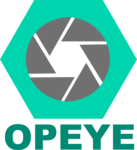PDF document: Survey on gaze estimation in the context of visual impairments
The gaze of a person, used as a mean of input for a computer offers many potential benefits. This is especially true with respect to people with special needs, such as visual impairments.
This survey documents the research for a real-life use case of a gaze-based application. Precisely, the gaze-based magnification of computer screen contents for people with reduced visual acuity. Techniques, impacts of visual impairments and previous work in all the relevant fields are discussed.
Controlling a computer is usually done using a keyboard and a mouse. Other means of intuitive input methods would be to control the computer either by audio or video input. Voice command based input is becoming more and more popular respectively feasible. It has recently peaked in commercial personal assistant applications for various platforms (e.g. Siri, OK Google, Cortana, Alexa, …). On the other hand, the video-based input is not yet as common. Computational capabilities and mathematical complexities have up to now restricted progress in this field without the use of additional hardware.
The progress in hardware development and machine learning though lead to huge improvements of possibilities. While for long it appeared that OCR and simple object or feature detection was the pinnacle of what seemed possible with visual processing using a computer, nowadays face & object detection are using special trained convolutional neural networks to describe pictures in social networks or on mobile platforms. Detecting a face in an image is no longer considered a very complex task. The same is true for detecting the center of a pupil within a picture frame. Even without the use of modern neural networks, it is possible to perform the computations required to estimate the gaze point on a screen of an observer, but these approaches are prone to many external factors and lack in speed as well as in precision. On the one hand, we have eye localization and tracking which is the detection of the existence of eyes and track them from frame to frame. On the other hand, we have gaze estimation which is the estimating where the person is looking. In this survey, we will first describe eye-tracking (ET) in more detail before elaborating more on gaze estimation (GE). Then we will discuss the different visual impairments and how they might impact a gaze estimation system. Finally, we will describe what screen magnification is used for and how gaze based control can improve the user experience.
Table of contents:
- Eye-Tracking
- Gaze Estimation
- Methodology
- Visual Impairments
- Gaze-based screen magnification
